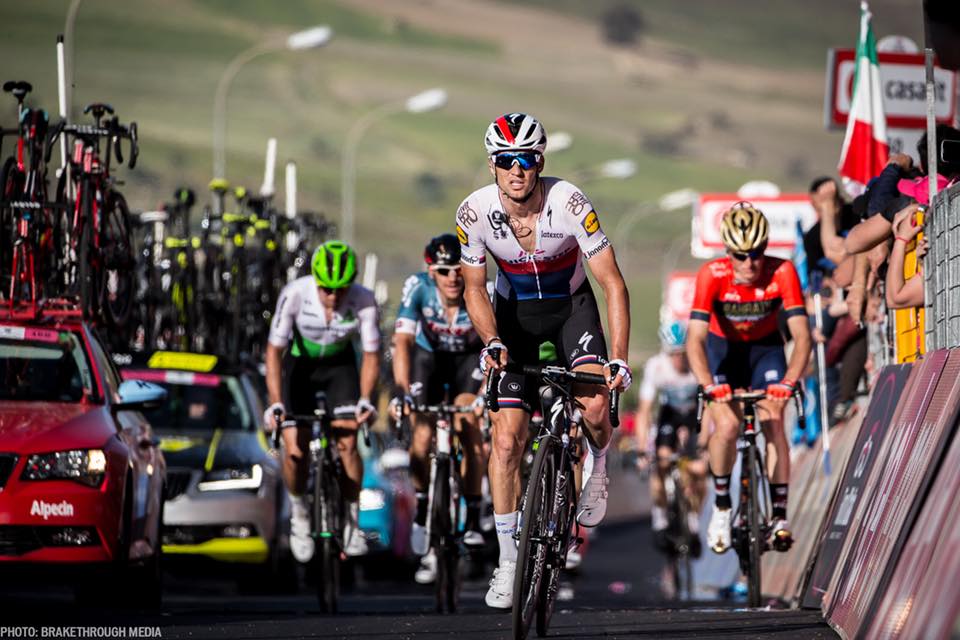

If the Spring is prime hunting ground for the peloton’s hard men, then the summer months are where the lean and lightweight climbers come out to play. The last two weeks of the Giro d’Italia saw some of the most epic ascents of recent cycling history and with the Tour de France just around the corner, the climbs are only going to keep on coming. What does it take to climb like a pro?
Fail to prepare, prepare to fail
Watching the Yates’, Froomes, van Vleutens, and Quintanas of this world dancing over mountain passes is motivation in itself, but that’s only going to get you half the way there. Without adequate training and well-planned nutrition, long days in the mountains will be nothing but a struggle. Consistent climbing ability requires a good base of endurance and efficient pacing developed over several months. Then, after a good carbohydrate-rich breakfast, strength can be sustained by isotonic drinks and energy gels. Remember, if you feel hungry or thirsty on the bike, it’s already too late.
The real MVP
Every pro rider has the enviable luxury of having all their kit and equipment looked after by their teams, and that often includes a choice of bikes – typically, between an ‘aero’ and ‘climbing’ frame. The latter will be better suited to mountains thanks to a particularly light carbon layup and visibly skinny frame design, which will be equipped with low-profile carbon wheels and a more forgiving range of gears for the steeper gradients.
Marginal gains
Wheels can make a big difference to comfort and efficiency whatever the terrain. Deep section wheels are a familiar sight on flat race days where aerodynamic advantage is most important, but don’t expect to see the same when the road goes up. This is not least due to the obvious reduction in material that comes with a shallow wheel, but also because of the responsiveness and wind resistance. What the rims are wrapped in is equally important, if not more so, and is also something you can optimise when on a budget. Lightweight and low-resistance tyres – like the award-winning S-Works Turbo tyre – will not only be faster going up but will also do you the world of good when coming back downhill.
There are plenty of other adaptations you can make to your bike to maximise your climbing ability besides wheels and tyres. Lightweight components and accessories like carbon fibre bottle cages and perhaps even adopting the much-admired, aero-proven Wahoo Elemnt Bolt – as shown off below by Ian Boswell of Katusha-Alpecin – will help shave off the seconds. One of the most effective and inexpensive ways to improve your pace, however, is to keep your bike clean and well-maintained. A clean bike is a happy bike, and a happy bike is a fast bike.
Use your head
The UCI made it compulsory for racers to wear helmets as recently as 2003, and helmet design has developed almost as much, if not more than bikes in that time. Like bikes, pros have a choice of helmets, opting for lightweight and well-ventilated on hot summer mountain stages and closed, aerodynamic lids for the fast, flat or cold. We’ve got a huge range of helmets at Bicycle Chain, including the well-represented Specialized Prevail – worn by Quick-Step Floors and Bora-Hansgrohe – and the new Kask Valegro, developed in cooperation with Team Sky for the best of comfort and ventilation.
Reckon you’re ready to take your climbing to the next level? Hopefully you’ll have found something you can take advantage of in this article, but if you’ve got any more queries about equipment or preparation, remember that our in-store staff are always on hand to help.